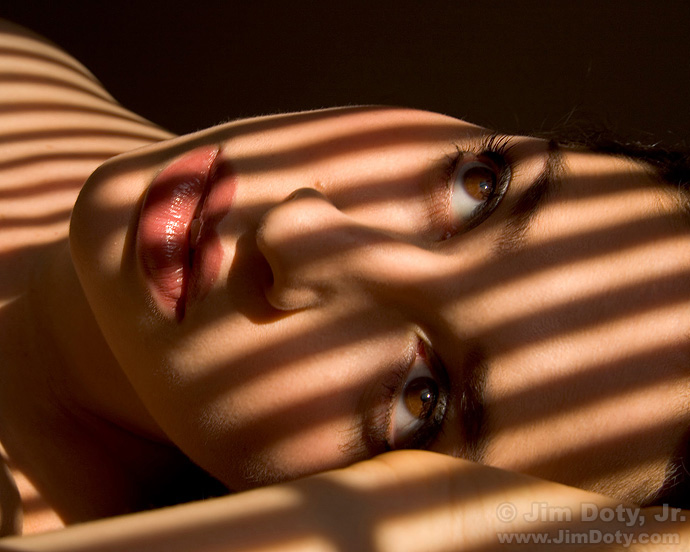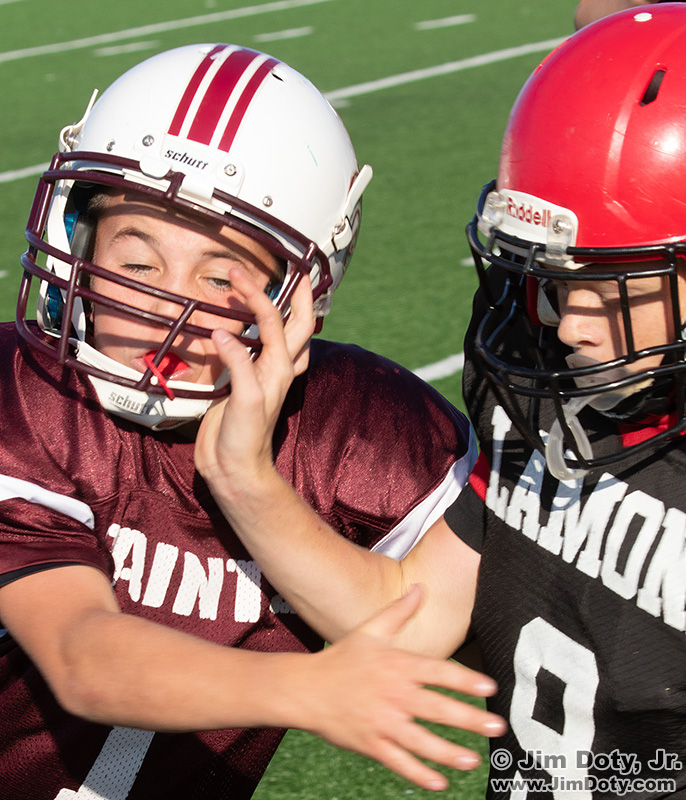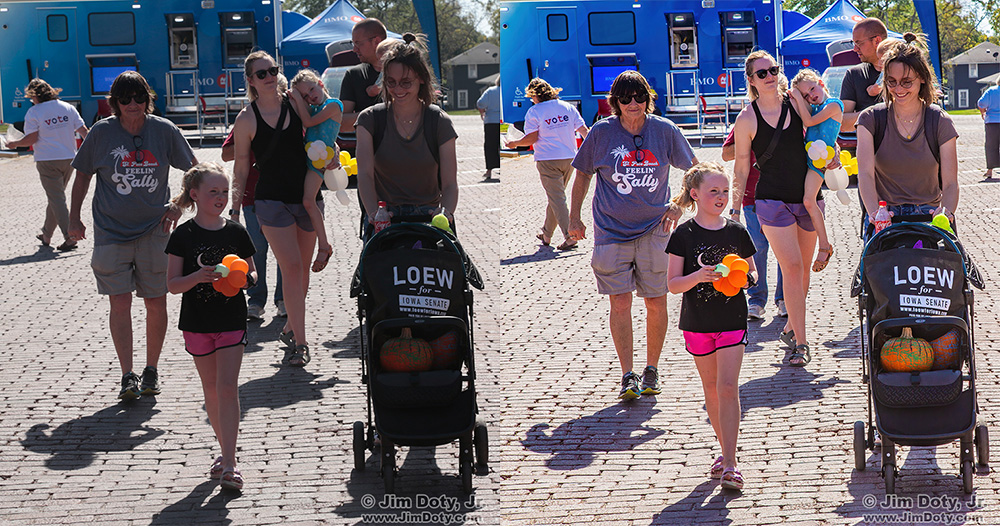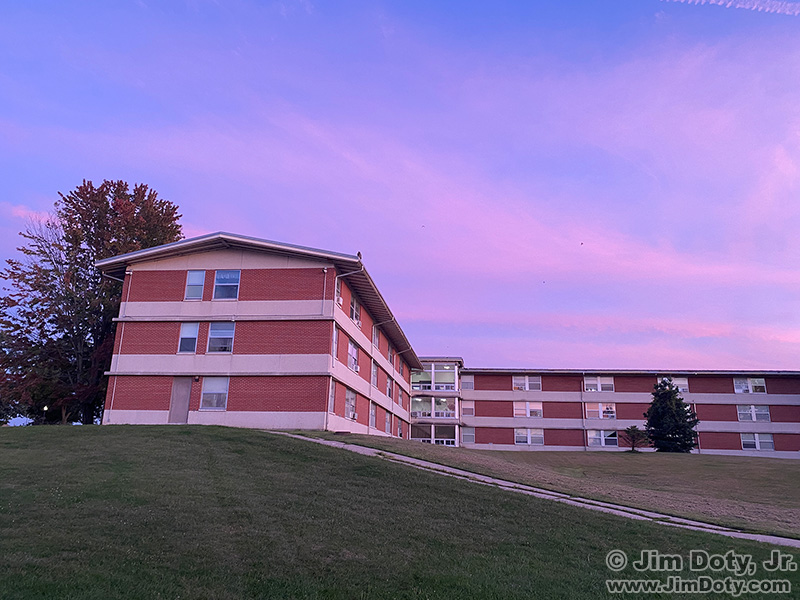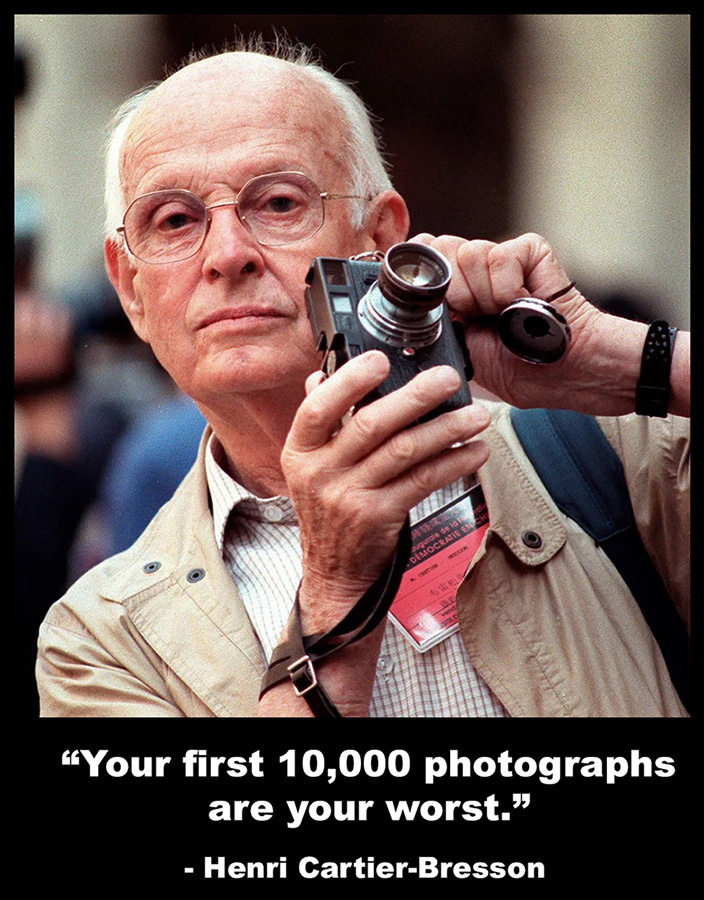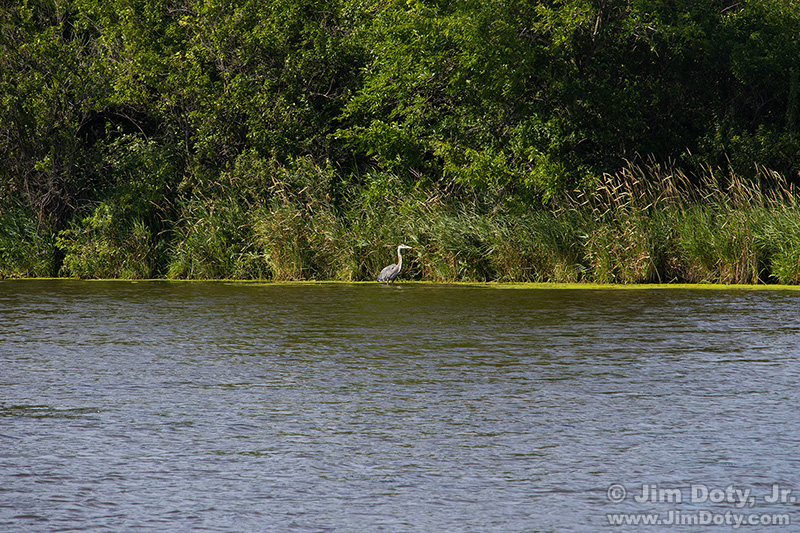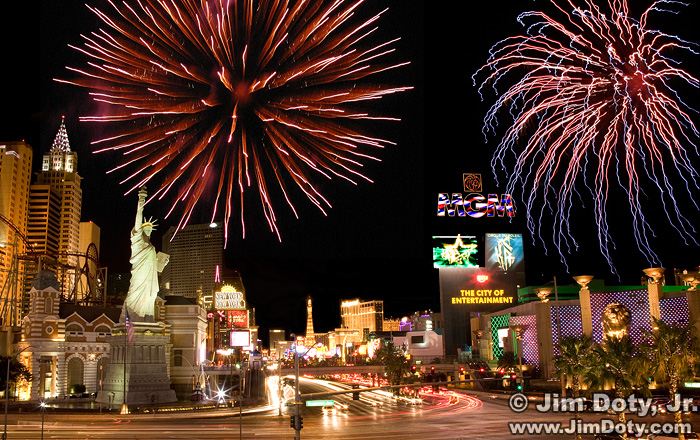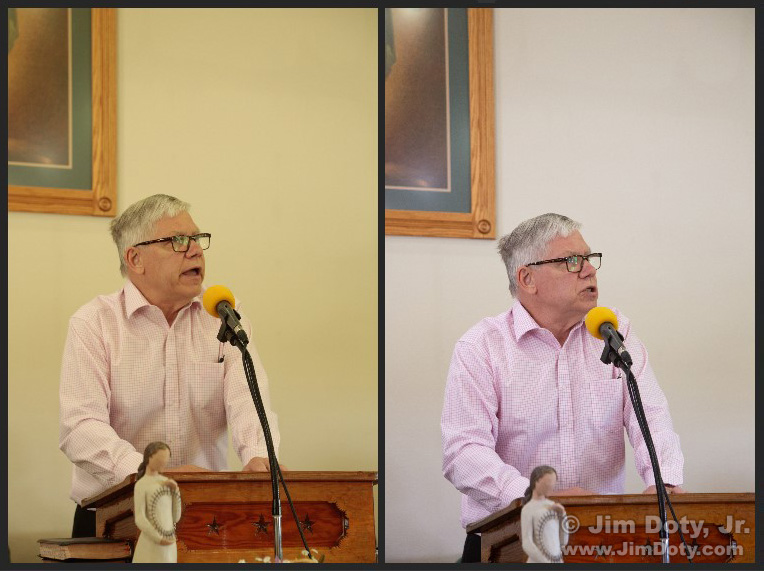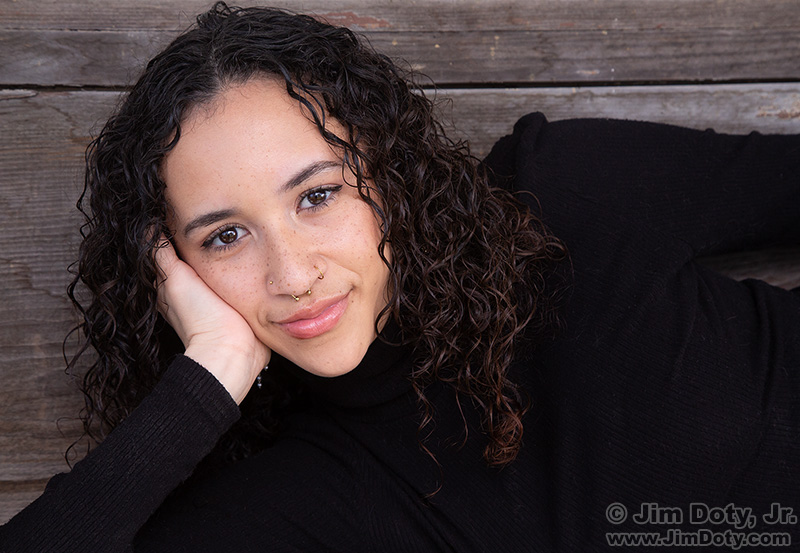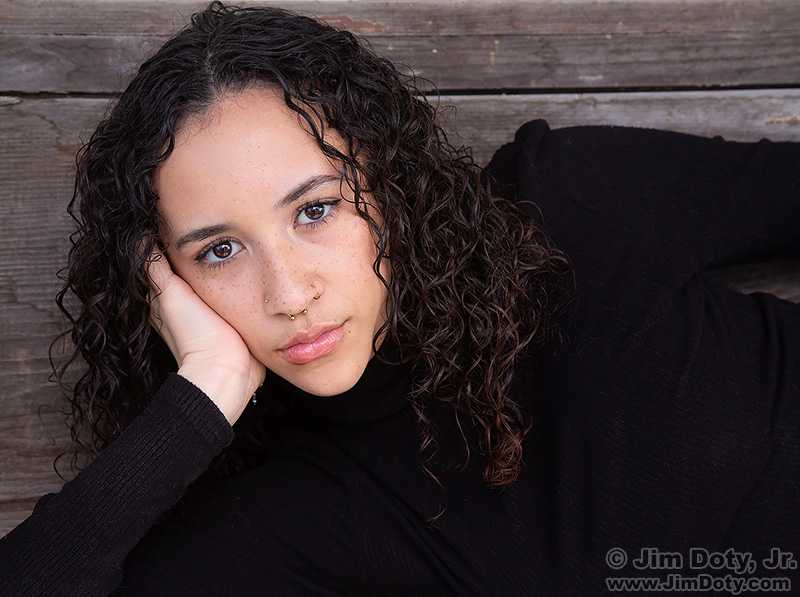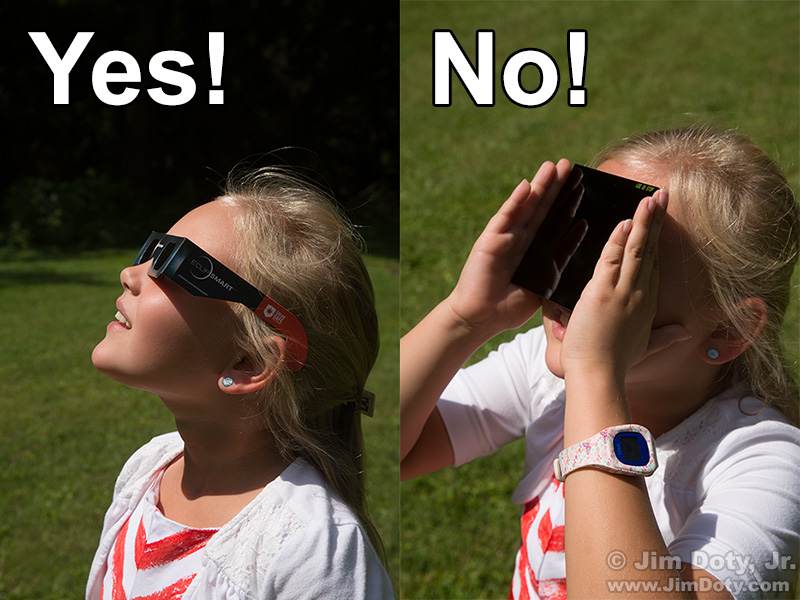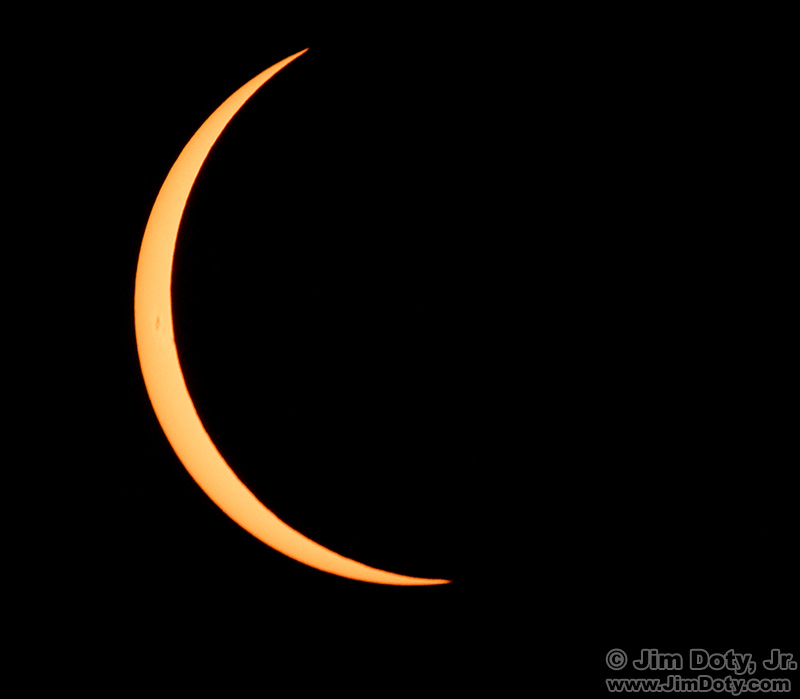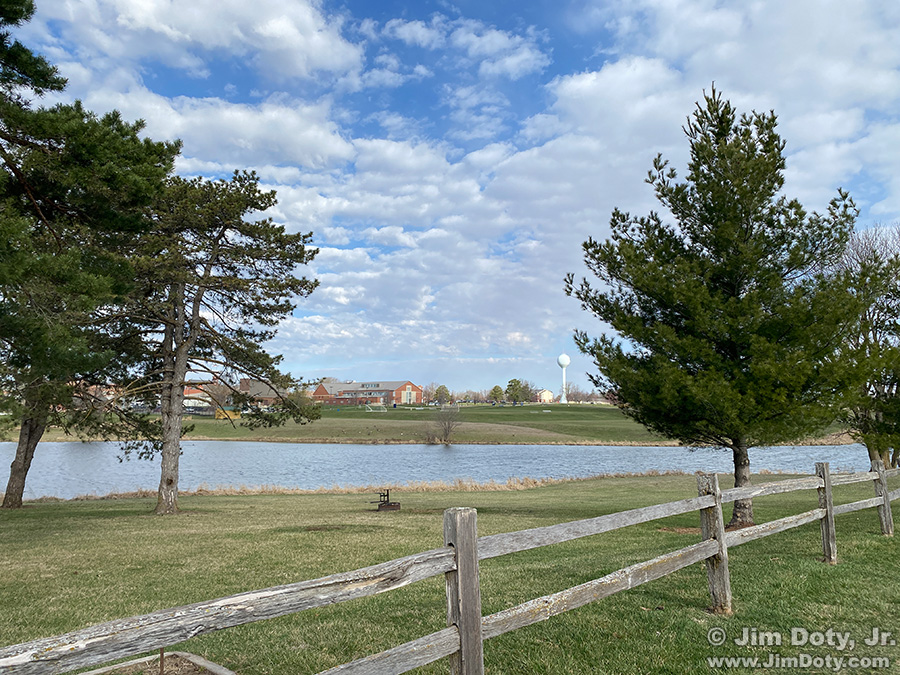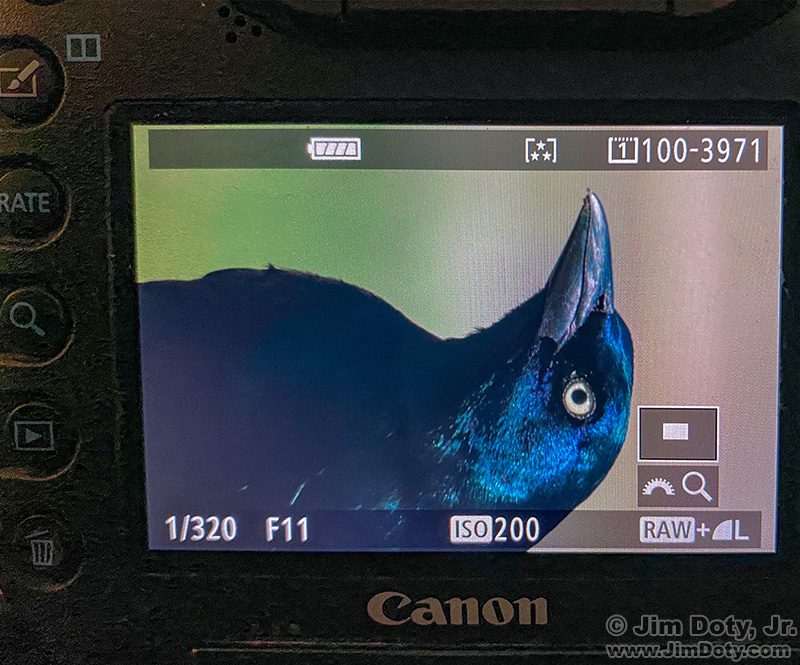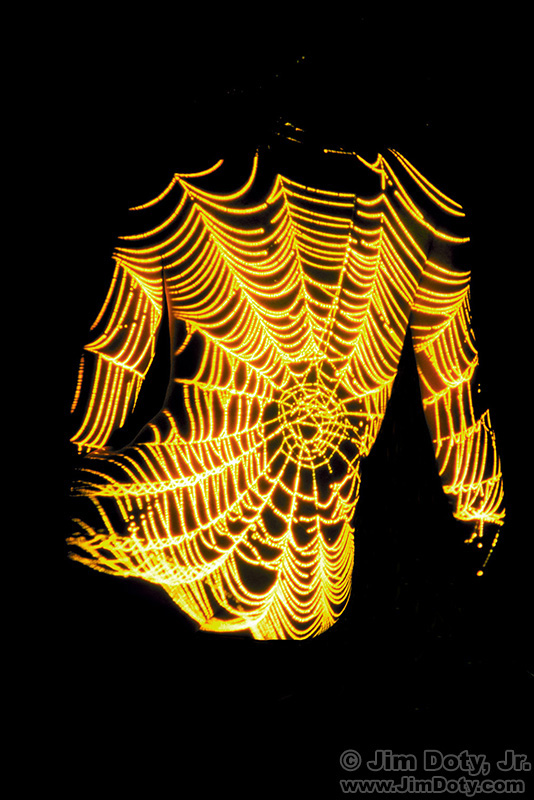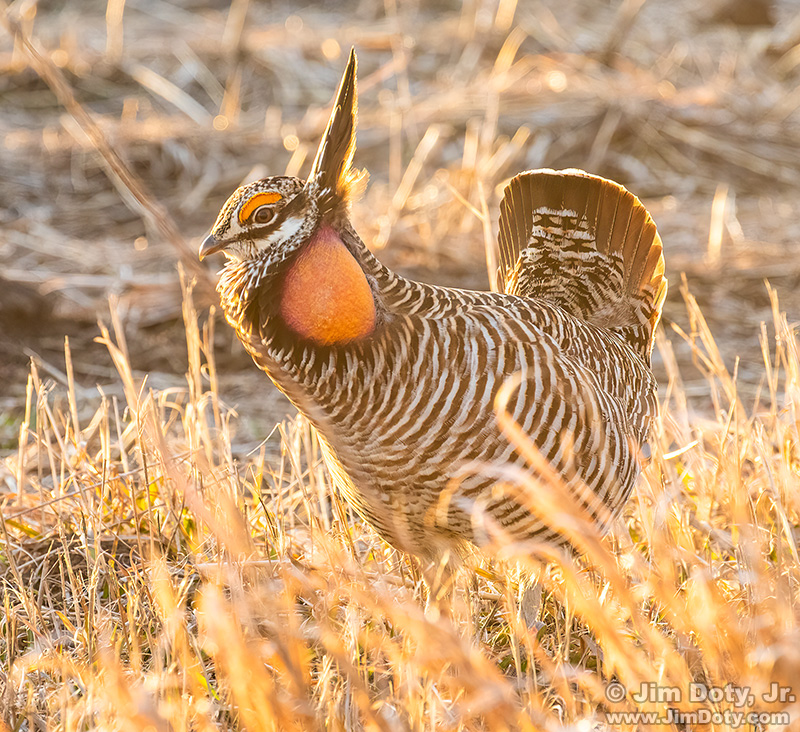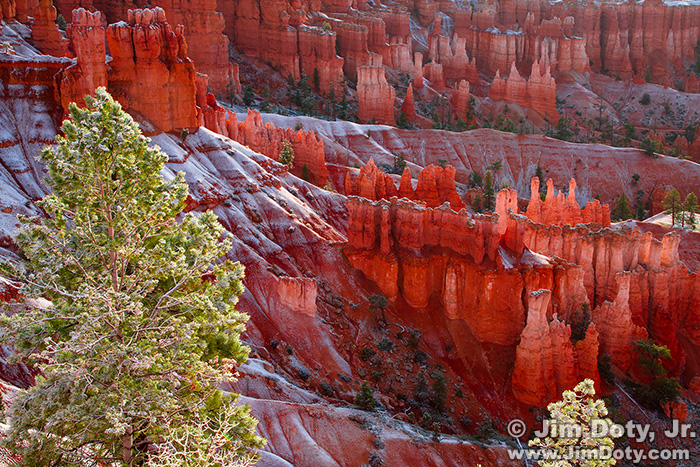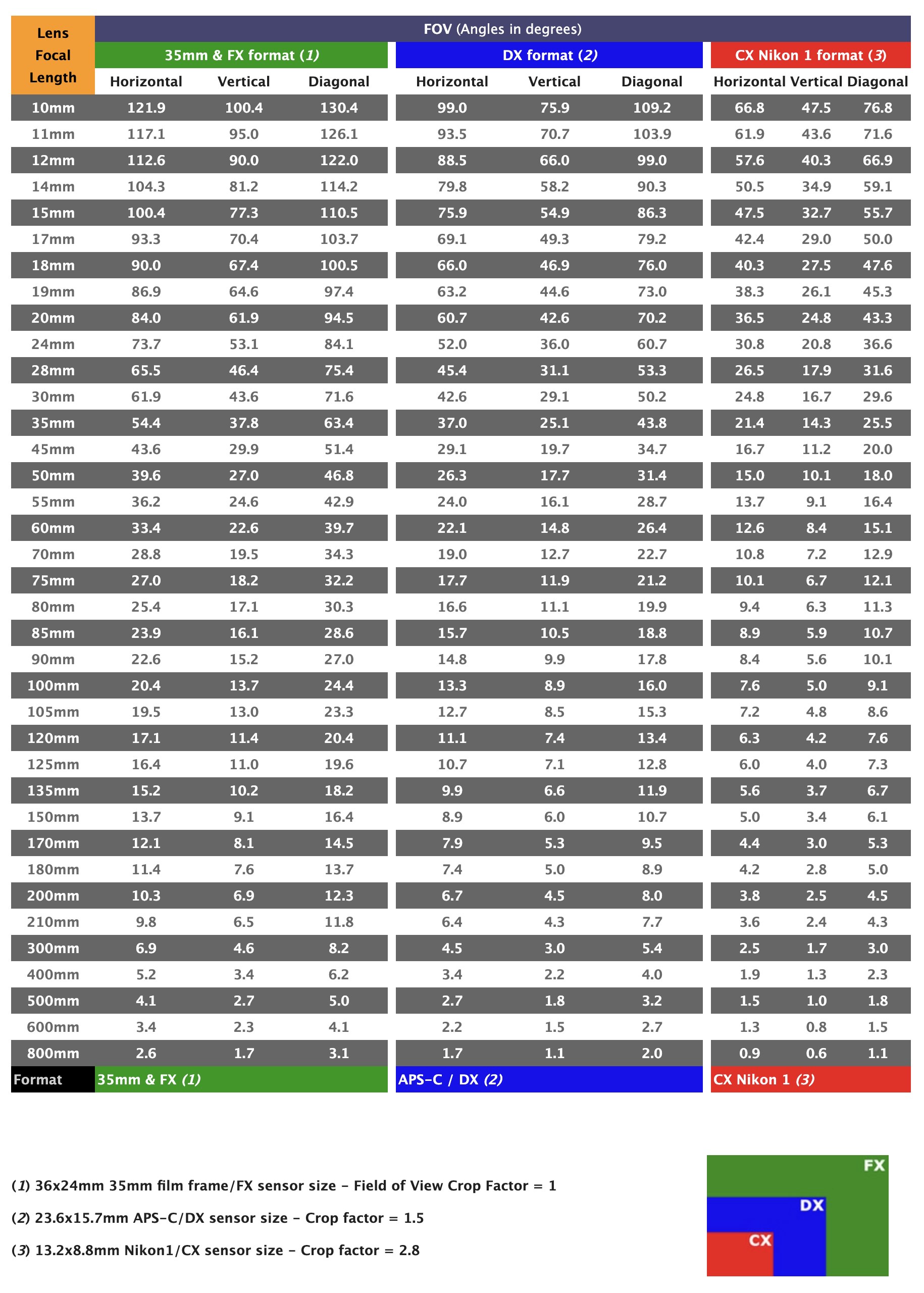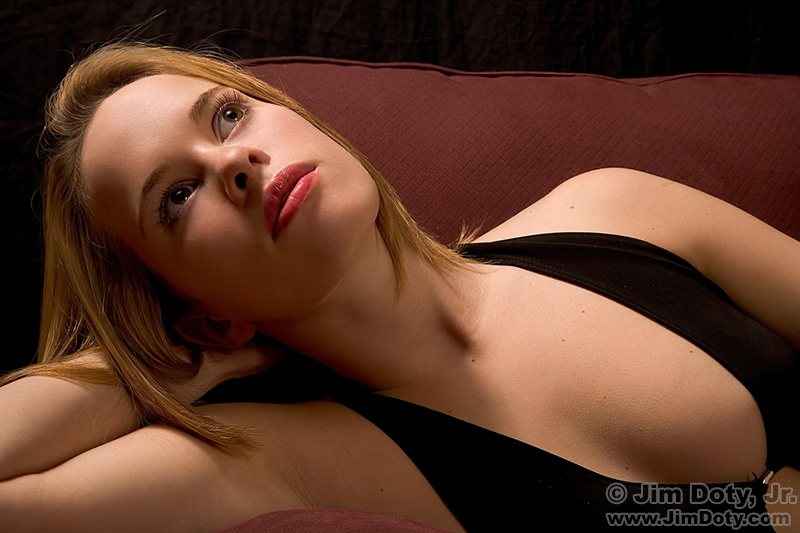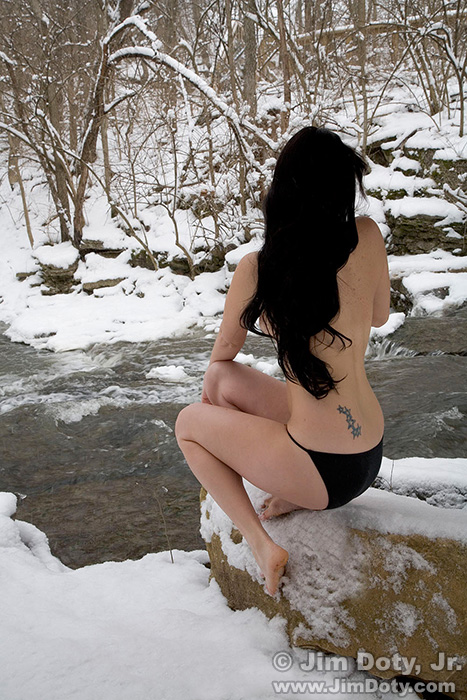Sarah was is town Thanksgiving weekend so we squeezed in enough time for a photo shoot. November 27 was the only date that worked for both of us. I had a special project in mind. Early November through late February is the only time of year that the sun is low enough in the sky to shine in the south facing window in my studio. I put a set of window blinds in the window for this part of the photo shoot and opened the blinds half way. Alignment was critical. It took quite a bit of doing to get the bands of sunlight to line up with the pupils of her brown eyes.
Category Archives: Using Equipment
How to Find and Photograph Comet Tsuchinshan-ATLAS
Comet C/2023 A3 over Lake La Shane, Iowa. Venus is at the lower left. A jet left a vapor trail that is slowly dissolving. This is cropped from the original image. The whole image is next. Continue reading
How to Choose, Correct, and ID Football Photos for the Newspaper
When I photograph a football game, the local newspaper doesn’t want dozens, much less hundreds of photos. I usually select 6 – 12 images to send to the Lamoni Chronicle and they choose the ones they want to publish.
Why (and How) You Should Optimize Your Digital Images!
This article is about why you should optimize your digital images, with a brief example as to how to do it.
No camera, no matter how expensive, can capture the full range of light and dark tonalities that your incredible eyes can see. No camera, no matter how expensive, can capture the full range of colors that your eyes can see. But you can make up for some of the differences by optimizing your images using Adobe Camera Raw (ACR).
My Great Horned Owl Adventure
Yesterday my dog and I were on our daily tour of our local lakes. We got an unusually late start and it was after sunset when we left the first lake. We were in a hurry to get to our second lake when I spotted something out of the corner of my eye on a rooftop corner of Tess Morgan, a college campus building. From a distance it looked like a vent pipe, but a vent pipe should not be located at the corner of the roof. To get a lot closer, I pulled into the parking for a better look. I am so glad I did. It was an owl (photo above).
Take a Lot of Photographs
If your first 10,000 photos are your worst, you want to get them out of the way as soon as possible so you can get to the good ones, right?! So take a lot of photographs!
How to See and Photograph the Perseid Meteor Shower Tonight
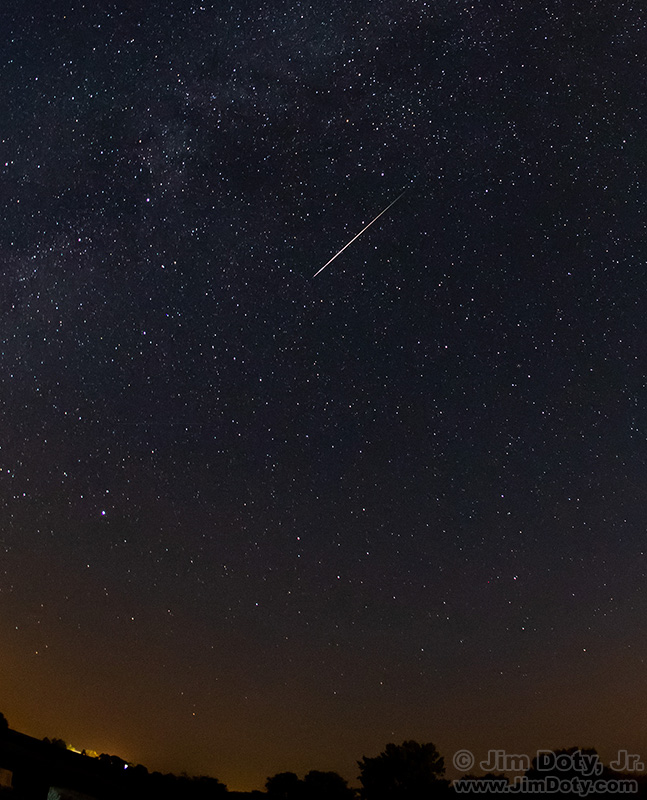
Perseid Meteor photographed from Rose Hill Cemetery west of Lamoni, Iowa. 4:55 am CDT, August 13, 2018. Cropped from the original image.
Tonight, August 11-12, is the predicted peak night of the Perseid Meteor Shower this year. But you can also look for the next few nights. This article will tell you what you need to know to see and photograph the most popular meteor shower of the year.
Great Blue Heron: iPhone vs DSLR at 130 Yards
I was driving along a country road at one of my favorite local lakes and spotted a Great Blue Heron straight north of me near the shoreline. I got the crazy idea to do comparison photos between my DSLR and my iPhone. The heron was too far away to get a high quality image with either camera, but I decided to do it anyway. I also wanted to check on the quality of the iPhone’s built in digital zoom versus cropping the original image and resizing it later in the computer.
“Where exactly was I when I took those photos?”
My primary camera, a DSLR, does not record the GPS location of my photos. Why does it matter? Some photo editors will not publish a photo unless you provide accurate GPS coordinates of the image location. Of course I knew I was approximately a couple of hundred yards up the beach from the parking lot, but not precisely where I was. Plus I am curious. Some of my photos are taken in less obvious locations and I like to know where I was when I clicked the shutter.
How To Photograph Fireworks
You can point your camera at the sky in auto exposure and autofocus modes and fire away whenever you see a burst of fireworks, but for the best quality photos, it helps to know a few tricks of the trade. It’s easy when you know what to do.
How to Protect Your Camera Gear in Hot Weather
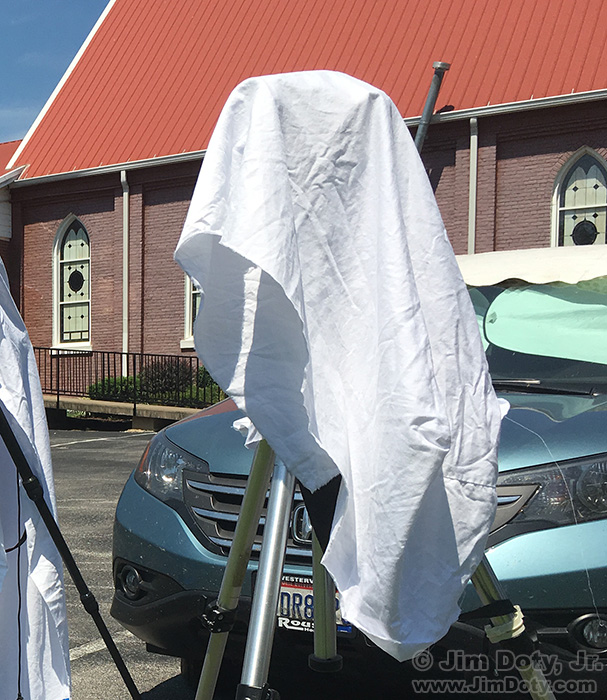
Hot weather is here in most of the country so it is time for a “save your camera gear” reminder. High end professional camera gear has a temperature and humidity rating. A top of the line Canon camera body has a limit of 115°F and 85% or less humidity. A black camera on a hot day can easily exceed that limit. Less expensive cameras of any brand have lower limits so it is important to protect your gear.
A Custom White Balance Is the Key to Better, More Accurate Colors
Setting a custom white balance is the key to better, more accurate colors. I took the photo on the left before setting a custom white balance. The lights in the room give everything a slight yellow-green color cast. Your eye-brain compensates for the color cast but your camera does not. I set a custom white balance on my camera and then took the picture on the right. The colors are now accurate and the photo looks much better as a result.
Soleece – A 24 Minute Photo Shoot
What do you do if you have a minimal amount of shooting time? After meeting for the first time and discussing a number of portrait possibilities (see Before The First Photo Shoot), we had less than 30 minutes to shoot. I usually prefer a longer shoot which allows time for more possibilities, but you work with the time you have.
The First Click of the Shutter
The first thing I do when I do a natural light portrait shoot is to do a custom white balance using an 18% gray card. Setting a custom white balance gives you more accurate and beautiful skin tones (details at the links below). After that, I do some simple portraits to get rid of the “first shoot jitters”. The person I am working with might be a little nervous. As for me, I am a perfectionist and I am nervous before every photo shoot and I am especially nervous the first time I work with someone. So I start off with something simple. This was my first portrait shoot with Soleece and I was super nervous.
Do NOT Look at the Eclipse Through a High Density Solar Eclipse Filter! You Could Go Blind!
Don’t worry. My model’s eyes were closed for the illustration photo on the right.
With the eclipse just around the corner, I am re-posting and updating this article from February 23. Do not look at the sun on eclipse day (or any other day) through a high density solar eclipse filter. Even though you are looking through a solar eclipse filter (i.e. solar filter) you can still go blind. And this is especially true looking through a camera and lens, even with a solar filter on the lens. Why? I am glad you asked.
How to Photograph the “Great American Eclipse” – April 8, 2024
This is updated from the February 22, 2024 article. If you have your solar filter ready to go, this is what you need to do to photograph the eclipse. If you don’t have a solar filter, you might still be able to get one. Check out the White Light solar filters (my first choice) from Thousand Oaks Optical or the Lee high density solar filters.
This is your guide to photographing the Second “Great American Eclipse”, April 8, 2024. The path of totality will cross the entire country from Oregon to South Carolina. This handy guide will help you photograph the eclipse. Planning ahead is key.
Things That Don’t Work: The Advice on Removing GPS Information from the Photos on Your iPhone
As the prior article points out, you should not post photos online that were taken at your home, the homes of your relatives, or your place of work until you remove the GPS location information from those photos. There are some other places where you probably won’t want to share the GPS location of your photos. The prior article also tells you how to remove the GPS locations using your computer. For this article I was going to show you how to remove GPS data from photos while they are still in your iPhone. I followed the advice online and discovered that advice did not work, at least on my iPhone 11.
How to “Rate” Photos in Your Camera
It is simple to rate photos in your camera, provided you have a rate button. (Later on I will tell you what to do if you don’t have a rate button.) If you take a photo you want to find quickly when you download the memory card, just push the rate button. When you download the photos on your memory card you can use Adobe Bridge (more about Bridge later) to quickly find your rated photos.
KIA Project – The Human Web
I created this image for a photography class I was teaching at the Kalamazoo Institute of Arts (KIA) in Michigan. It was so popular that Jim Riegel, the head of the photography department, asked if he could exhibit it at the KIA faculty exhibit at the annual Kalamazoo Art Fair in Bronson Park in June. Jim was in charge of the faculty exhibit. When June 2, 2001 rolled around, he used it as the centerpiece work of art for the KIA exhibit. At the end of the day he told me it was the most talked about work of art in the faculty exhibit. All kinds of people stopped by to ask questions about it and how it was created. This article explains how I did it.
More Greater Prairie Chicken Excitement!
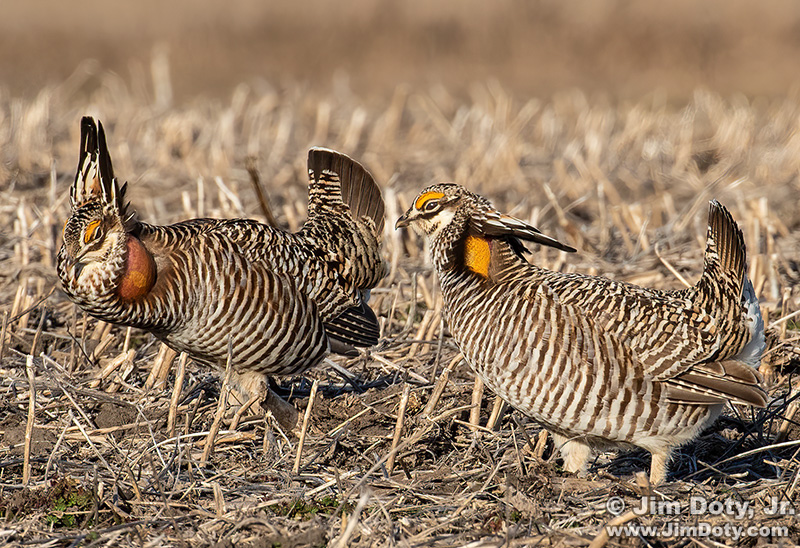
Greater Prairie Chickens, Elk Chapel Road, northwest of Lamoni Iowa. Sunday, February 25, 2024. 8:27 am.
I’ve been back to the prairie chicken location a few times over the last week, but I have not spotted him since February 18. That all changed Sunday morning. And there were two males instead of one!
How to Photograph the “Great American Eclipse” – April 8, 2024
This is your guide to photograph the Second “Great American Eclipse”, April 8, 20124. The path of totality will cross the entire country from Oregon to South Carolina. This handy guide will help you photograph the eclipse. Planning ahead is key.
Originally posted Jun 26, 2017. Revised and updated February 22, 2024.
Greater Prairie Chicken Excitement!
A male Greater Prairie Chicken has taken up residence on the edge of a cornfield about 30-40 feet from a county highway, much to the delight of bird watchers. I got a call from a friend, so I grabbed my camera gear and drove out to the location. This image (above) was taken with the sun low in the west so this prairie chicken has wonderful, warm backlighting. Compare this light to the next photo.
Winter Photography Safety Essentials
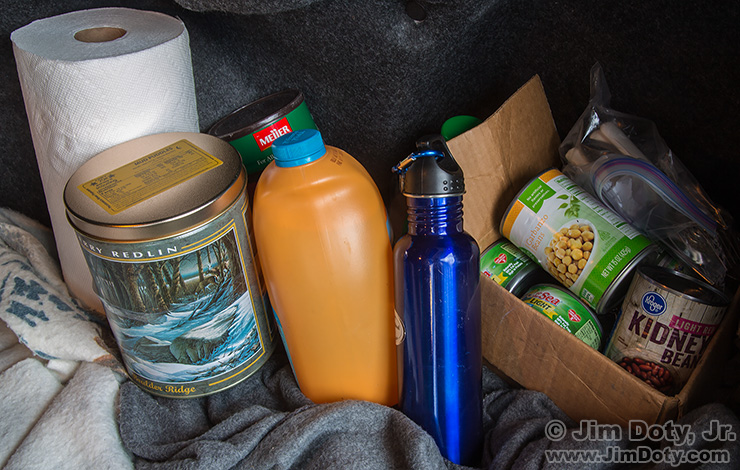
Some of the winter travel items I carry in the trunk of my car. This is the “kitchen” and “furnace”.
I grew up in Colorado where strange weather can strand you in any month of the year. Even though it is rare, I’ve seen blizzards in the Colorado high country in July. So I learned to carry some safety essentials when doing winter photography in remote locations. You never know when you might be stranded for several hours, a whole day, or longer, until the blizzard abates and someone can come find you. This is what I carry in my car when I hit the road in the winter and pretty much any time I am going to be in the High Rockies. I include a few winter travel tips, too.
How to Protect Your Camera Gear in the Cold and Snow
It is still really cold out there so be careful to protect your camera gear. Cold and snow can cause a lot of damage to your camera gear. Something as simple as shooting outside and taking your camera inside your house or car can cause hidden damage that won’t show up until days or weeks later. The simple steps in this article could save you hundreds of dollars in repair bills.
FOV (Field of View) Lens Charts
There are times that it is handy to have a FOV Lens Chart, also called Angle of View charts. These charts tell you in degrees the angle of view for lenses used on cameras with different size digital sensors. Why might you need to know that information? I am glad you asked.
Rachel in Rembrandt Lighting
This is Rembrandt lighting. The best clue is triangle shaped light on her right cheek.
How to Photograph a Musician in the Cold and Snow
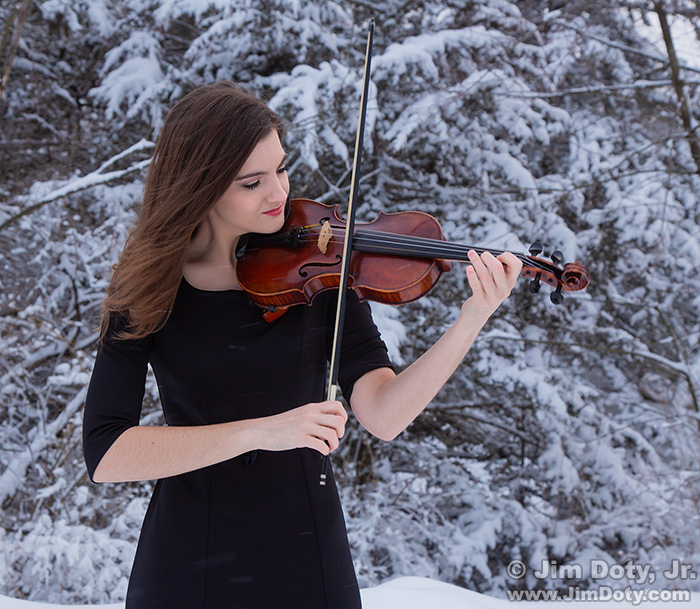
It was my happy privilege to do winter portraits of Beth Presler who is a superb violinist. This article has suggestions for photographing any musician on a cold, snowy winter day.
Winter Photography Safety Essentials

Some of the winter travel items I carry in the trunk of my car. This is the “kitchen” and “furnace”.
I grew up in Colorado where strange weather can strand you in any month of the year. Even though it is rare, I’ve seen blizzards in the Colorado high country in July. So I learned to carry some safety essentials when doing winter photography in remote locations. You never know when you might be stranded for several hours, a whole day, or longer, until the blizzard abates and someone can come find you. This is what I carry in my car when I hit the road in the winter and pretty much any time I am going to be in the High Rockies. I include a few winter travel tips, too.
How to Protect Your Camera Gear in the Cold and Snow
Cold and snow can cause a lot of damage to your camera gear. Something as simple as shooting outside and taking your camera inside your house or car can cause hidden damage that won’t show up until days or weeks later. The simple steps in this article could save you hundreds of dollars in repair bills.
How to Photograph a Nude Model in the Cold and Snow
It is difficult enough to create a beautiful nude image under normal circumstances, much less in the cold and snow. You need to bring some significant skills and experience to the task. So does your model.

